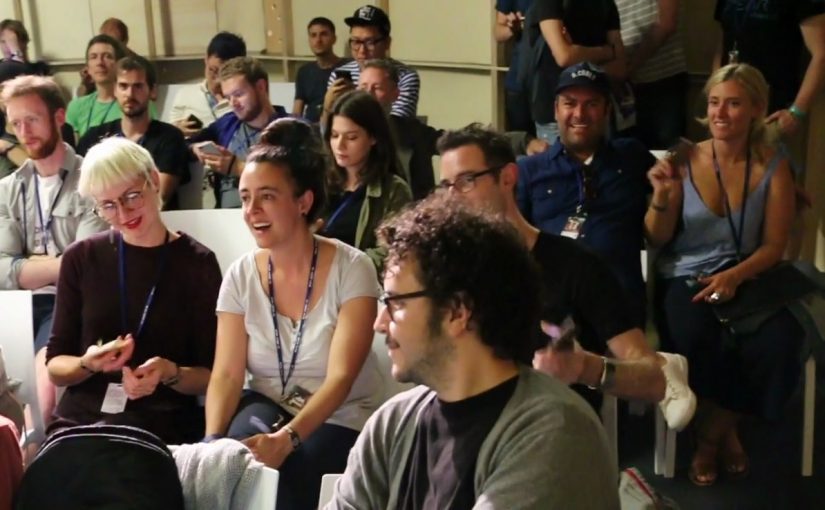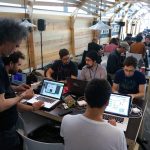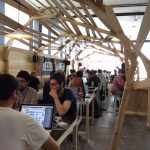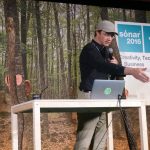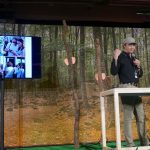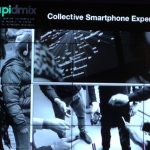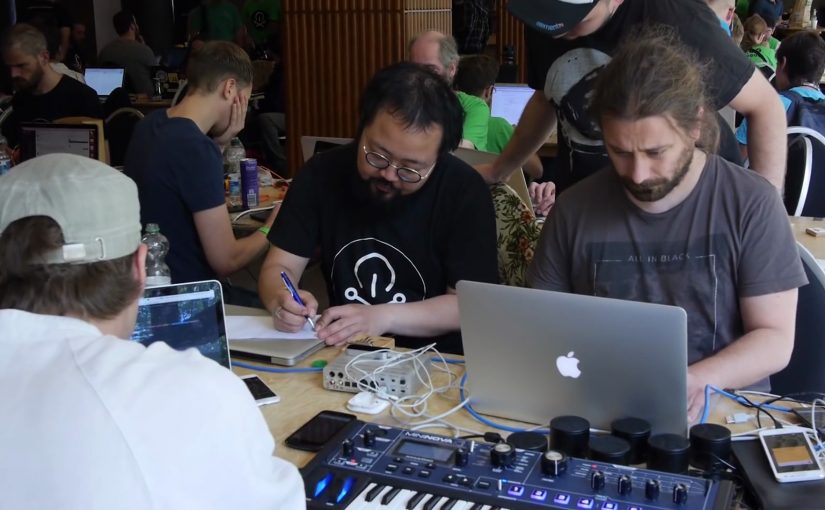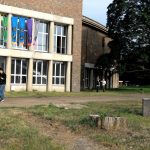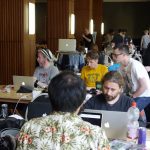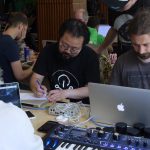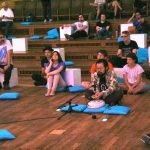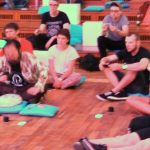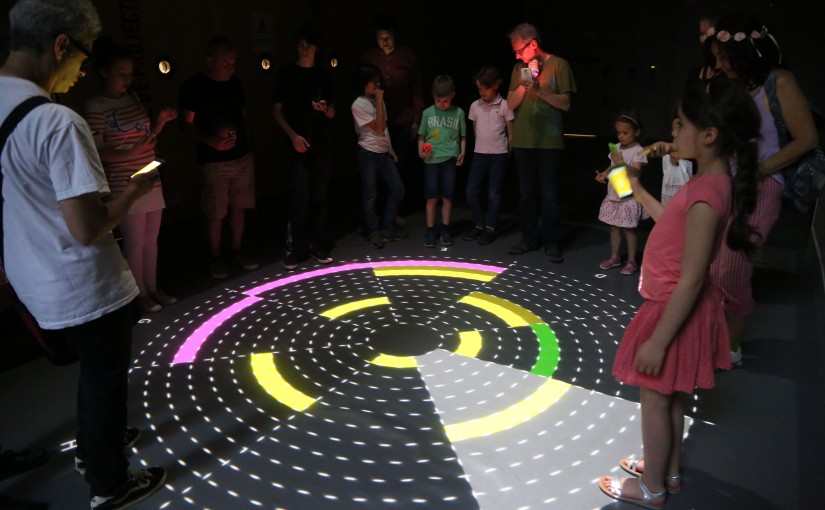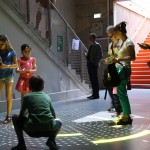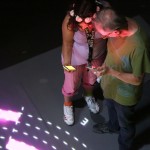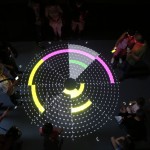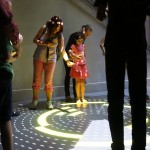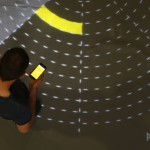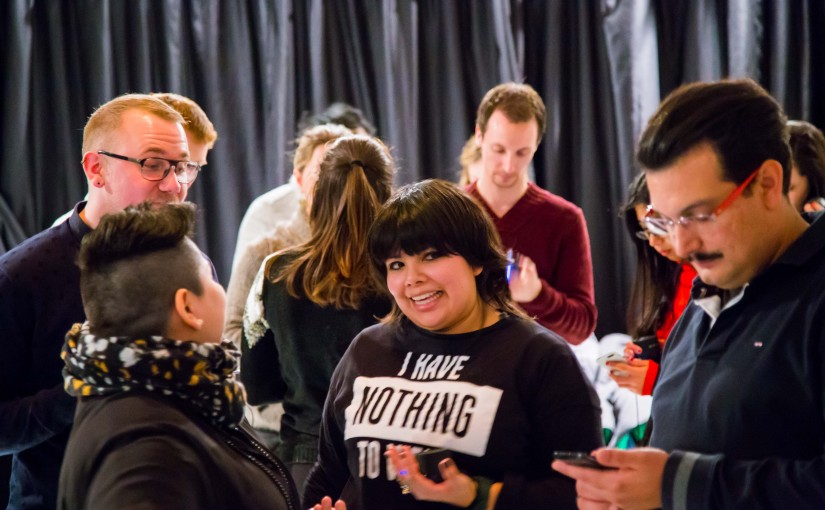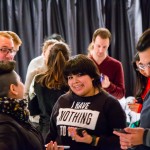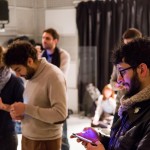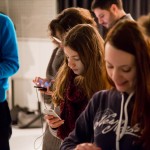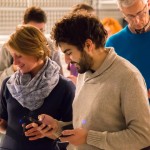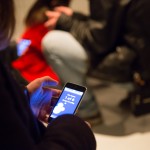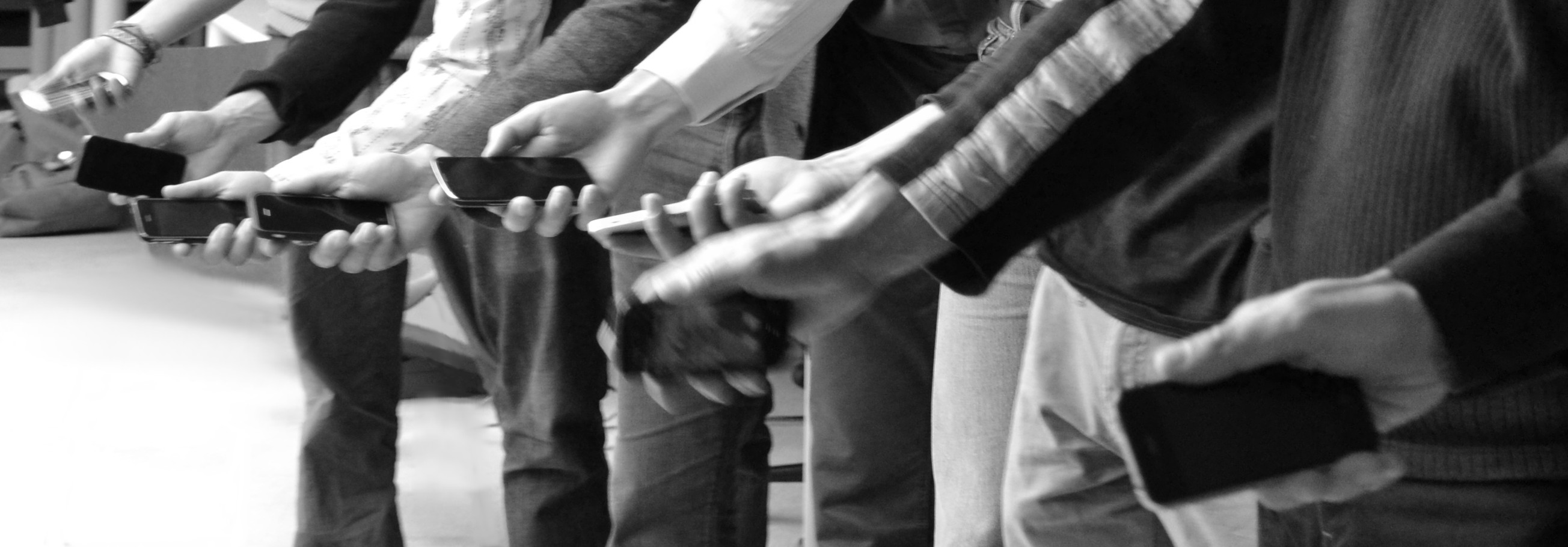CoSiMa has participated at the Sonar+D international conference on creativity and technology of the Sonar music festival in Barcelone with a Sonar Innovation Challenge. A team of 5 musicians, designers, and developers – formed over a month before the event – has worked two and a half days on a music application dedicated to a public interacting collaboratively through their smartphones. The web-based application has been developed with the Soundworks framework.
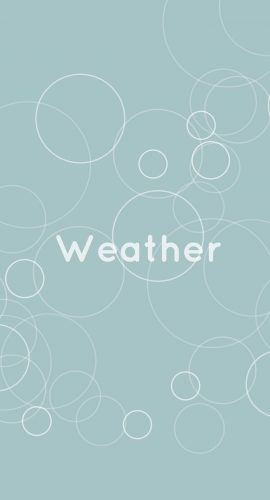 The resulting application is Weather, a performance for a DJ and a public participating through their smartphones. As usual in performances based on the Soundworks framework, participants connect their smartphones to the local CoSiMa Wi-Fi network and visit the web page of the Weather application. Once connected to the application, the participants can play with four gestures to switch between different weather states that are associated to different sound textures and visualizations generated on their mobile devices: (1.) Touching the screen generates the bird chirps of a sunny afternoon, (2.) swaying and tilting the device generates wind, (3.) shaking it softly generates a rain sound and rain drops on the screen, and (4.) shaking it harder generates thunder sounds and lightning on screen.
The resulting application is Weather, a performance for a DJ and a public participating through their smartphones. As usual in performances based on the Soundworks framework, participants connect their smartphones to the local CoSiMa Wi-Fi network and visit the web page of the Weather application. Once connected to the application, the participants can play with four gestures to switch between different weather states that are associated to different sound textures and visualizations generated on their mobile devices: (1.) Touching the screen generates the bird chirps of a sunny afternoon, (2.) swaying and tilting the device generates wind, (3.) shaking it softly generates a rain sound and rain drops on the screen, and (4.) shaking it harder generates thunder sounds and lightning on screen.
The sound generated by the participants creates a sound textures distributed over the audience. The current weather states of all clients are collected on the server to generate a weather profile that controls visuals on a public display and environmental sounds on the PA. In addition, the weather profile is interpreted by a DJ playing live electronic music in dialog with the audience’s sound textures.
The five CoSiMa SIC challengers who developed the Weather performance are Matthew Bethancourt, Andrés Ferraro, JP Carrascal, Chaithanya Jade, and Yuli Levtov.
